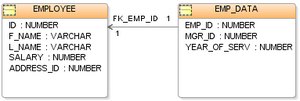Relational database facts for kids
A relational database is like a super organized digital filing cabinet! It's a smart way to store lots of information, or data, on computers. Imagine you have many different lists of information, like customer names, their addresses, and what they bought. A relational database helps link all this related information together. It does this by finding matching pieces of data across different lists. This makes it much easier to find, sort, and understand all your information.
For example, imagine a database that holds all the information about houses sold in a town. This information can be grouped in many ways: by the year the house was sold, by its price, or even by the buyer's last name. This way of organizing data is called the relational model. Because it uses this model, we call it a "relational database."
The special computer program that manages and organizes these relational databases is called a Relational Database Management System (RDBMS). Sometimes, when people say "relational database," they are actually talking about this software.
Contents
Why Relational Databases Are Important
Relational databases are super important today! They are the main way many companies store their information. This includes things like:
- Financial records (money stuff)
- Medical records (your health info)
- Personal information (like your name and address)
- Manufacturing and shipping data (how things are made and sent out)
They help businesses keep track of huge amounts of data in a clear and organized way.
Who Created Relational Databases?
The idea of the relational database was first described by a smart person named Edgar F. Codd in 1970. He worked at IBM Almaden Research Center. His ideas changed how computers store and manage information forever!
Images for kids
See also
 In Spanish: Base de datos relacional para niños
In Spanish: Base de datos relacional para niños



